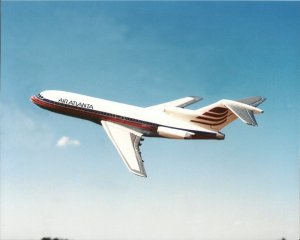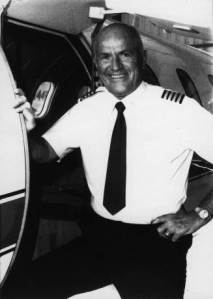The latest bad news from the airport is that the TSA folks have now been caught doing, what we all know they have been doing for some time, and that of course, is stealing computers, watches, wallets etc., from the passengers. I have frequently challenged the TSA reps regarding the security of my very important personal items and was invariably was rudely told “not to worry about it.” It is very clear that the opportunity for theft in the chaos at the checkpoint is extremely high, yet there are no firm procedures to prevent this theft.
The first and best solution to this problem, if you don’t already own your own airplane, is the wide-open world of on-demand jet charter. Drive your vehicle directly to the airport, out onto the tarmac, watch the ramp personnel load your bags in the aircraft baggage compartment, enter the aircraft, and be airborne 10 minutes later, while sipping some Dom Perignom champagne and nibbling on lobster tail. There is of course a small caveat that comes with being a jet- setter: It will be many thousands of dollars to go on a relatively short flight. If you fill the airplane up with traveling passengers the cost is still more than a first-class ticket, but in most instances the convenience will justify it.
If you can’t afford the jet, it is possible to charter a smaller propeller driven airplane at perhaps less than half the tariff of the jet. Needless to say there are downsides: It will likely be noisier and you’ll fly lower and slower which usually results in more turbulence; you will be flying with less experienced pilots, thus diminishing the safety factor. The aircraft maintenance is likely to be poorer than airline standards and the pilots are more likely to be fatigued. The rate of fatal accidents in on-demand small airplane charter is extremely high, but, it is infinitely safer than battling the 18-wheel “semis” on the interstate.
Now we will take this transportation equation to a much higher level. There are numerous aviation entrepreneurial people who are designing automobiles that fly, or if you prefer, airplanes that can be driven down the road. Furthermore, the ICON amphibious air machine is getting very close to production (http://www.iconaircraft.com/). This fun little bird allows you to tie it up at your dock, take off down the lake, and land on nearly any hard surface runway, other than the major hub airports, as well as a lake. Of equal importance is the fact that it can burn standard auto gas (nearly half the price of avgas) at an extraordinarily low rate of 4 gallons an hour while you cross the terra firma at 110 miles an hour.
At this year’s EAA Air Adventure extravaganza at Oshkosh, Wisconsin the Terrrafugia was a highlight. It was not just a static display, it actually flew. This aptly named transportation device appears to be the real deal. This roadable airplane is gaining some traction (http://www.terrafugia.com/) The Switchblade (http://goo.gl/HNh6cJ0) is another air/highway machine-in-the-making that has some viability. Two years ago I flew the above-mentioned ICON simulator at the Oshkosh Air Show and became infatuated with the ICON; an amphibious flying critter, it is getting close to production. If you live on the water it is the ultimate “boy-toy.” The Flintstones/Jetson family’s flying car is now out of the realm of fantasy. One can also consider getting from A to B with their jetpack. Hooray for creative, entrepreneurial engineers—and their financiers. Roadable airplanes will soon be as ubiquitous as drones.
This blog is prepared by Allen Morris, aka Ace Abbott, a retired commercial pilot, and aviation author; The Rogue Aviator (www.therogueaviator.com) and Dead Tired (http://www.deadtiredpilots.com/). The “Ace Abbott Aviation Affair” talk show is available at http://webtalkradio.net/






